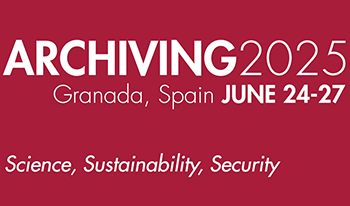
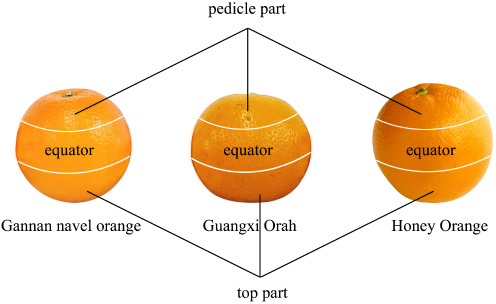
An ideal archival storage system combines longevity, accessibility, low cost, high capacity, and human readability to ensure the persistence and future readability of stored data. At Archiving 2024 [B. M. Lunt, D. Kemp, M. R. Linford, and W. Chiang, “How long is long-term? An update,” Archiving (2024)], the authors’ research group presented a paper that summarized several efforts in this area, including magnetic tapes, optical disks, hard disk drives, solid-state drives, Project Silica (a Microsoft project), DNA, and projects C-PROM, Nano Libris, and Mil Chispa (the last three being the authors’ research). Each storage option offers unique advantages in each of the desirable characteristics. This paper provides information on other efforts in this area, including the work by Cerabyte, Norsam Technologies, and Group 47 DOTS, and an update on the authors’ projects C-PROM, Nano Libris, and Mil Chispa.

The National Museum of African American History and Culture’s Freedmen’s Bureau Project is a comprehensive initiative that has provided digital access to the Freedmen’s Bureau records. Previously, this important collection could only be accessed in person through the National Archives and Records Administration, with no way to search for specific people or topics. Smithsonian staff have worked with the public to index and transcribe the records to provide free full-text access to these invaluable records. To date over 600,000 pages of Freedmen’s Bureau records have been collaboratively transcribed by more than 60,000 individual volunteers. This data has been made available to the public for research in the Freedmen’s Bureau Search Portal. This groundbreaking search application is the result of more than a decade of data creation, processing, and cleaning; transcription; community engagement; and historical and genealogical research. The work of Smithsonian staff is ongoing and emerging technologies present exciting opportunities to expand access and continue to enable meaningful discoveries.

An ideal archival storage system combines longevity, accessibility, low cost, high capacity, and human readability to ensure the persistence and future readability of stored data. At Archiving 2024 [B. M. Lunt, D. Kemp, M. R. Linford, and W. Chiang, “How long is long-term? An update,” Archiving (2024)], the authors’ research group presented a paper that summarized several efforts in this area, including magnetic tapes, optical disks, hard disk drives, solid-state drives, Project Silica (a Microsoft project), DNA, and projects C-PROM, Nano Libris, and Mil Chispa (the last three being the authors’ research). Each storage option offers unique advantages in each of the desirable characteristics. This paper provides information on other efforts in this area, including the work by Cerabyte, Norsam Technologies, and Group 47 DOTS, and an update on the authors’ projects C-PROM, Nano Libris, and Mil Chispa.
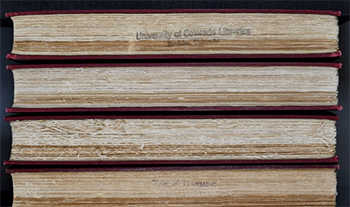
A continued challenge for preservation is objective data to make informed collection decisions. When considering a shared national print system, this challenge relates to decisions of withdrawal or retention since catalog partners may not have data regarding the condition of others’ volumes. This conundrum led to a national research initiative funded by the Mellon Foundation, “Assessing the Physical Condition of the National Collection.” The project captured and analyzed condition data from 500 “identical” volumes from five American research libraries to explore the following: What is the condition of book collections from 1840–1940? Can condition be predicted by catalog or physical parameters? What assessment tools might indicate a book’s life expectancy? Filling gaps in knowledge about the physicality of our collections is helping identify at-risk collections and explain the cases of dissimilar “same” volumes based on the impact of paper composition. Predictive modeling and assessment tools are also used to improve the understanding of what is typical for specific eras.
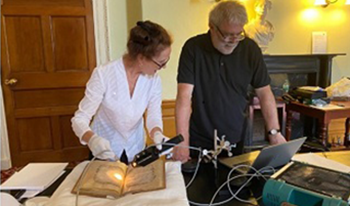
Often the perspective of heritage science can seem opaque, with the perception of science being only for “scientists”. The fairly recent move to using the term “heritage science” is better known in Europe, but there is some confusion as to what this term encompasses. Heritage science refers to any of the multidisciplinary fields that contribute to the discovery, security, and preservation of a diverse range of cultural heritage materials. Many heritage collection items are complex multi-composites with convoluted preservation needs and degradation pathways. One of the areas that seems to be less well understood and appreciated is the capacity for heritage science to add new layers of knowledge to collection items, as well as the capacity for re-interpretation through this new information. Further areas of heritage science that support humanities include confirming provenance, the ability to link and reconnect separated collections, and the utilization of new technology to provide levels of security, an area of support greatly needed in the current environment for extensive trafficking of heritage.

The main objective of this research is to think about the cultural heritage of “Ningunismo” and its definitions through the preservation and cataloging of materials from different media, contained in a horizontal and communal archive with free online access. The focus is mainly on the hermeneutic conflict, originated after the death of the founders and how the mass media distorted its existence. The archive is composed of 500 items, 170 agents, and 30 places. The creation of a tree of elements helped to relate the different formats. From newspaper notes, to abandoned web pages, to papers at sociology conferences, any publication about or mentioning "Ningunismo" was included. Virtual material pertaining to disused web pages turned out to be the most numerous.
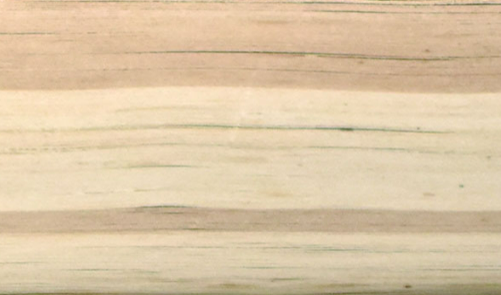
One of the continued challenges for preservation resources is the demand for objective data to make informed retention and withdrawal decisions. Discussions within the shared print and print repository communities have circled around the integral question pertaining to the selection process of books to be incorporated into a national shared print system, namely the minimum number of copies such a system must maintain. The challenge has been knowing the condition of those volumes that are withdrawn or retained, since all decisions have been based solely upon a shared catalog where partners do not have data to know the condition of others’ volumes. This conundrum led to a national research initiative funded by the Mellon Foundation “Assessing the Physical Condition of the National Collection” to create a baseline of understanding of the actual condition of the national collection in research libraries and collections. The project undertook an extensive assessment capturing data from 500 “identical” volumes each from 5 different research libraries and analyzing the dataset to answer the following questions: What is the general condition of library collections in the 1840-1940 period? Can the condition of collections be predicted by catalog or physical parameters? What collection assessment tools help determine a book’s life expectancy? Filling the gaps in knowledge for understanding the physicality of our collections is helping us identify at-risk collections and explain the high percentage of dis-similar “same” volumes due to the impact of paper composition. Predictive modelling and simple assessment tools allow more accurate prediction of good and poor-quality copies of books, as well as what is typical and atypical for specific decades.
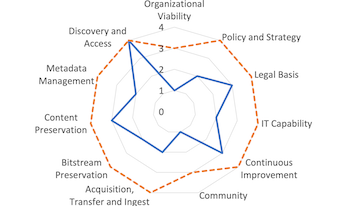
Digitization is a key process in preserving, protecting and providing continued long-term access to archive materials. The competencies required in digitization pose challenges to individuals and organizations engaging in digitization activities. We take a competency mapping approach to support digitization skills anticipation. Current and anticipated digitization competencies in public and private organizations in Finland were surveyed using a digital preservation competency framework. Results show that organizations see digitization requiring a wide set of competencies ranging from policies and legal issues to practical organization and technical delivery of digitization. There is anticipated need to optimize organizational and service capabilities in near future. The desired target state is quite advanced overall, regardless of current capabilities. The largest self-identified competency gaps exist in strategical and technical approaches to digital archiving and digital access to archives. Our results inform continued professional development and planning of future digitization efforts.

Conservation documentation plays a crucial role in preventing misrepresentations about cultural property. Yet conservation records often remain undigitized and unsearchable. As part of efforts to improve access to conservation documentation, members of the Linked Conservation Data Consortium recently embarked on a project to transform paper and born-digital conservation records spanning forty years into linked data. Project team members reviewed existing models for preservation data and found that only the CIDOC Conceptual Reference Model would accommodate documentation of materiality, object structure, and conservation treatment events as prescribed by professional guidelines. Project outcomes revealed meaningful patterns in conservation data that may be useful in future model development as well as shortcomings in the XML technologies employed for transforming the data.